Plants You Don’t Want to Bloom!
I overheard a friend of mine talking on the radio earlier this week about how lovely his wife’s lamb’s ear plants are now that they’re in full bloom. It’s a great plant, but blooms aren’t its best friends.
I decided I’d list seven plants that come to my mind – seven plants where you really don’t want to see flowers. (And my list doesn’t even include onions, where flowers spell the end of the line for the production of bulbs.) Note that many of my photos don’t show the flowers, since I’ve spent a career encouraging people to remove them.
• Lamb’s ear. This is a glorious, low-growing foliage plant. Its leaves are as soft as, well, a lamb’s ear. It grows well in morning sun with afternoon shade. Mature height of the leaves is 8 or 10 inches, and its gray-green color makes it an ideal contrasting plant for dark evergreens nearby. But when it starts to produce its spikes of lavender blooms, the form of the individual plants will be ruined. Trim them off as soon as you see them starting to pop up.
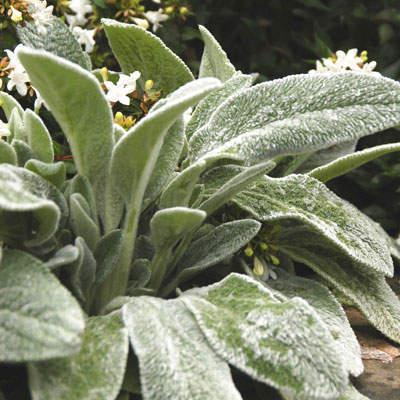
Lamb’s ear (Flowers showing are on abelia in background.)
• Coleus. Back 25 or 30 years ago, about the only coleus you commonly saw were raised from seeds, and they tended to produce flower spikes almost as soon as you could get them planted. You absolutely had to remove those floral stems the moment you saw them or the plants would shut down and quit growing the rest of the season. Modern varieties have been selected for their lack of flowers, so your odds of success are greatly improved. But if you see a flower spike anyway, pinch it out right away.
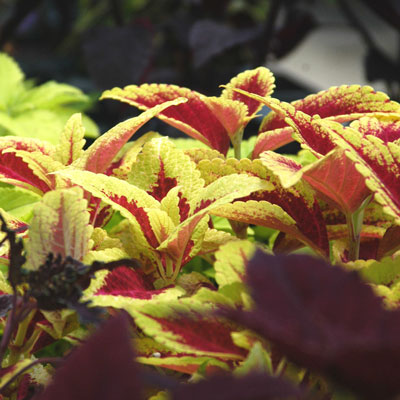
Coleus
• Basil. You raise basil for its leaves, not for its seeds, so when it tries to produce flowers, you need to pinch them off right away. Clip back into vegetative growth, and apply a high-nitrogen fertilizer to stimulate more leaves.
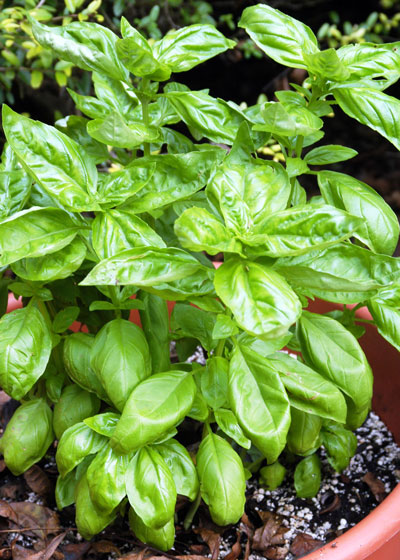
Green basil
• Caladiums. As showy as their leaves are, their flowers are typical little Jack-in-the-pulpit blooms like all the other aroids (philodendrons, dieffenbachias, spathiphyllum, etc.). They’re nothing special, and when they show up, new leaf production hits the brakes big-time. Snap them off the moment you see them.
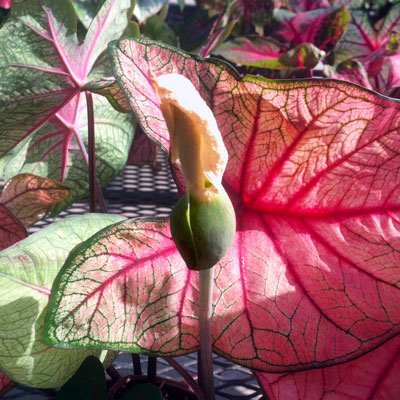
Caladium bloom
• Mums in the early summer. I’ll save the explanation for another time, but fall-flowering chrysanthemums will often try to bloom again in the spring. Night lengths, after all, are the same in the spring as they are in the fall, and that’s what triggers the flowering process. (There I go trying to explain it!) Enjoy them for a while, but by the middle of June, it’s time to trim out all the flowers and flower buds by cutting back into normal vegetative growth. That will give them time to produce new stems with the longer days in the summer. Those stems will have taller, stronger blooms.
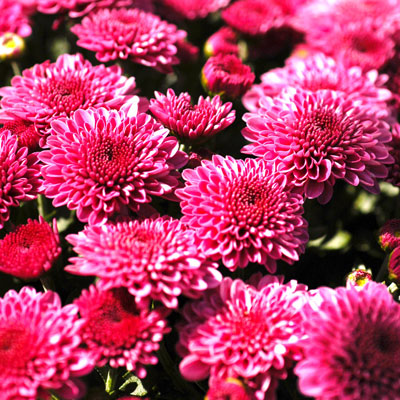
Garden mum in fall bloom
• Santolina, or lavender cotton. You don’t see this plant very much in Texas currently. It was a common border perennial for many years. The green form has always been easier for me to maintain (more tolerant of heavy, wet soils following rains) than the gray type. But flowers are the bane to both of them. The flowering stalks just seem to run out of steam when they’re left in place. Trim them off as soon as you’re aware of the button buds forming.
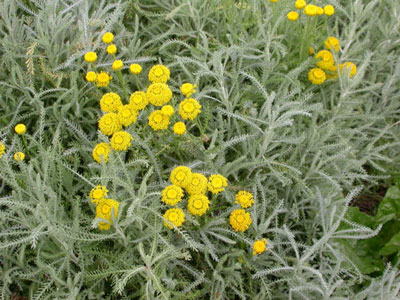
Santolina (Photo is from the Texas A&M Horticulture website.)
• Dusty Miller. There are several gray-leafed plants that go by this name. Most are used as winter annuals alongside pansies, pinks and other flowering plants. But come springtime they bolt into flower, and gardeners who want to keep the plants into or through the summer need to trim off the flower stalks as soon as they appear.

Dusty Miller
